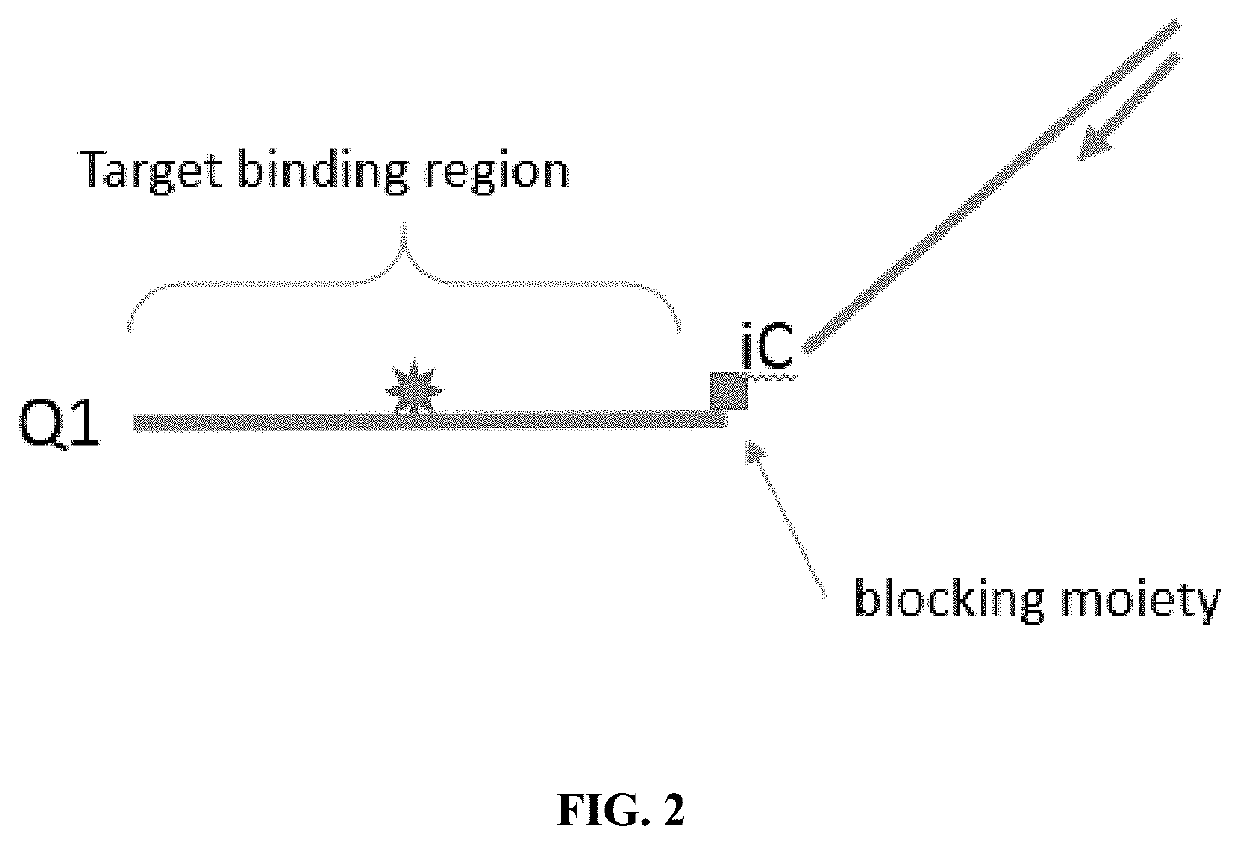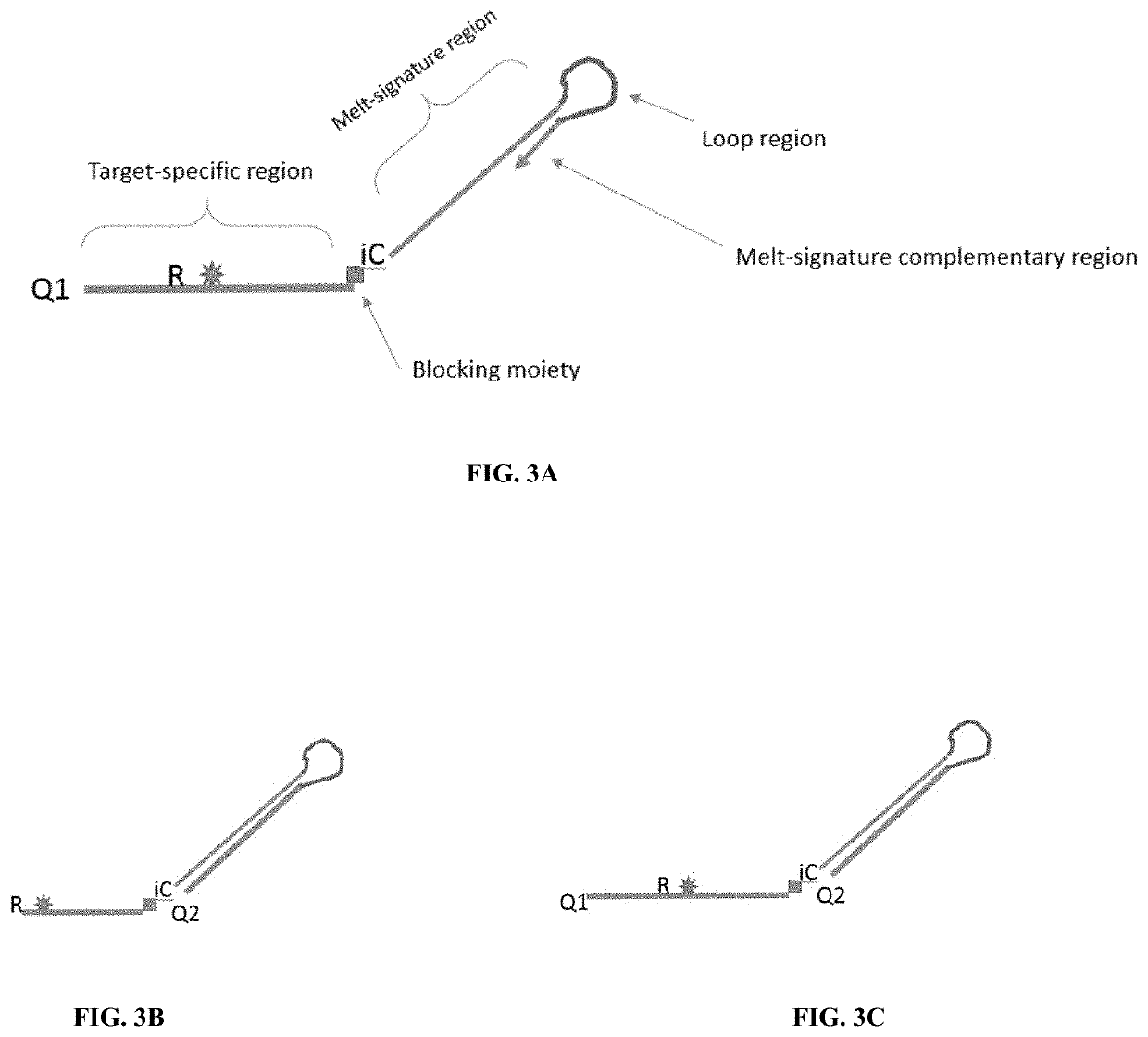Methods and probes for performing PCR with melt analysis for increased multiplexing
a technology of multiplexing and pcr, applied in the direction of microorganism testing/measurement, biochemistry apparatus and processes, etc., can solve the problems of limited multiplexing capability, limited multiplexing capability, and complexity of designing suitable probes/primers, etc., to achieve the effect of increasing the multiplexing capability of detectable probes
- Summary
- Abstract
- Description
- Claims
- Application Information
AI Technical Summary
Benefits of technology
Problems solved by technology
Method used
Image
Examples
Embodiment Construction
I. Exemplary Probe Configurations
[0044]By using cleavable probes with unique melt profiles, multiplexing can be achieved in a single-color channel, thus allowing even more multiplexing with multiple color channels. Disclosed are methods and compositions for detecting nucleic acids in a sample. Typically, the methods include detecting signals, such as a signal emitted from a fluorophore. Also disclosed are oligonucleotides, especially probes, which may be used for the detection of target nucleic acids. In particular methods of the embodiments employ cleavable and extendable probes to facilitate multiplexing by generation of multiple melt curves or descrete melt analysis. Varying the length and / or G / C content of the extendable segment (e.g., the melt-signature region or stem region) of the probe gives rise to double-stranded structure with different melt properties allowing for generation of multiple melt-distinguishable probes per reporter.
[0045]FIGS. 1A-1C show a schematic of a prob...
PUM
| Property | Measurement | Unit |
|---|---|---|
| temperature | aaaaa | aaaaa |
| temperatures | aaaaa | aaaaa |
| temperatures | aaaaa | aaaaa |
Abstract
Description
Claims
Application Information
 Login to View More
Login to View More - R&D
- Intellectual Property
- Life Sciences
- Materials
- Tech Scout
- Unparalleled Data Quality
- Higher Quality Content
- 60% Fewer Hallucinations
Browse by: Latest US Patents, China's latest patents, Technical Efficacy Thesaurus, Application Domain, Technology Topic, Popular Technical Reports.
© 2025 PatSnap. All rights reserved.Legal|Privacy policy|Modern Slavery Act Transparency Statement|Sitemap|About US| Contact US: help@patsnap.com



